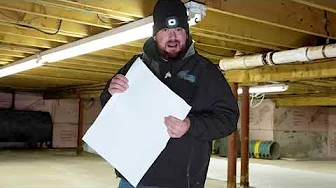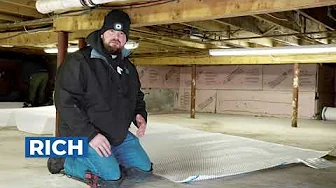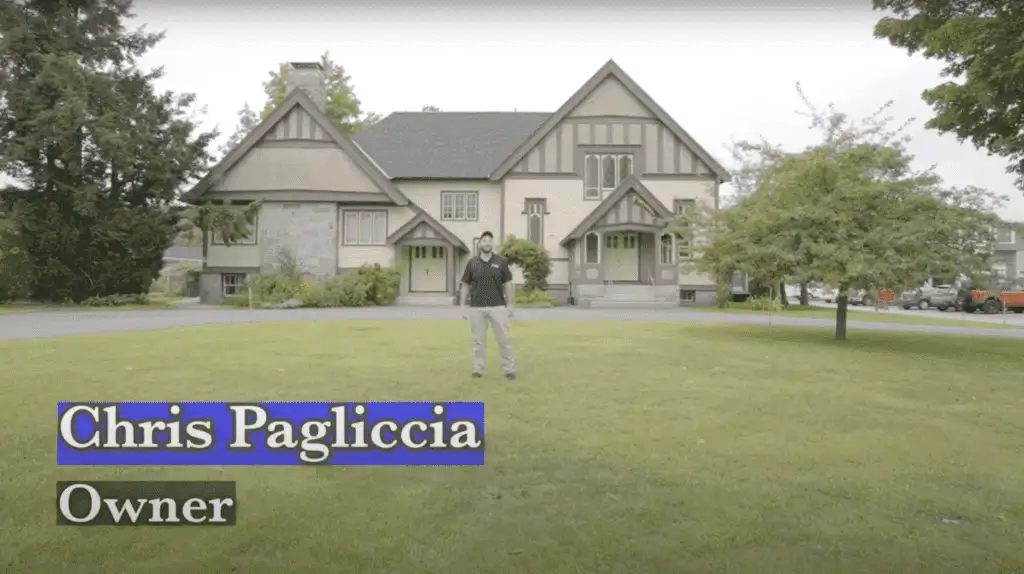Foundation Crack Repair Weston MA
Cracks in your foundation are more than just an aesthetic concern. They may indicate underlying structural issues that could worsen over time. Ignoring these signs can lead to costly repairs and even impact the safety of your property. Addressing foundation cracks early is essential for homeowners in Weston, MA, to protect their investment and ensure their home remains secure.
Real People - Real Great Results
Crawl Space Video Playlist
Why Foundation Cracks Appear
Cracks don’t just pop up overnight—there’s always a culprit. In Weston, MA, the causes often boil down to three main factors: soil, water, and time. Unfortunately, your home can’t escape these forces, but understanding them can help you stay ahead of the curve.
Common Causes of Foundation Cracks
- Soil Movement: Massachusetts’ freeze-thaw cycles and Weston’s mix of clay and sandy soils can wreak havoc. Heavy rains can cause the soil to swell; dry spells shrink it back. This shift—expand, contract, repeat—is like a slow-motion tug-of-war that pressures your foundation.
- Water Damage: Weston isn’t exactly a stranger to heavy rain or snowmelt. Both mean water, and water’s no friend of foundations. Poor drainage or clogged gutters lead to pooling, soaking into the ground, and compromising the integrity of the concrete.
- Settling: Even the sturdiest homes aren’t immune to gravity. Over time, the ground beneath your foundation shifts or compresses, causing uneven stress on the structure. Settling is natural, but if it feels like your house is doing yoga poses, it’s time to call in help.
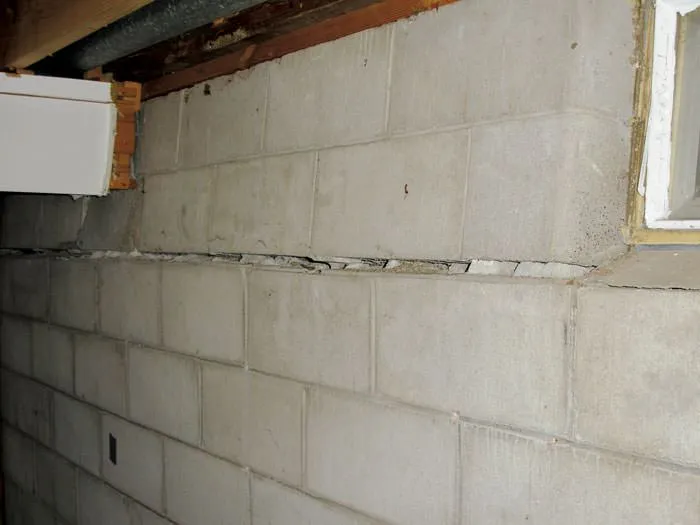
Types of Foundation Cracks
Not all cracks are created equal. Here’s how to spot their “personalities” and figure out the severity:
- Hairline Cracks: These slim, barely-there lines might seem harmless. While often just the result of concrete curing, they’re worth keeping an eye on. Don’t let their size fool you—ignored long enough, they can let water seep in or grow into something worse.
- Vertical Cracks: These cracks run down the walls and can suggest harmless settling if thin. But if they’re wide enough to make you raise an eyebrow, or you’re seeing water stains around them, they’re not innocent anymore.
- Horizontal Cracks: The big red flag. These often point to external pressure—like soil pressing inward during a wet season or frost heaves. Horizontal cracks can signal significant structural issues, and waiting isn’t an option. Call a pro stat.
While cracks may look different, the message is clear: don’t ignore them. Foundation issues never fix themselves, and small problems today become bigger headaches tomorrow. If you can identify the cause and type early, you’ve got a better shot at keeping Weston soil’s mischief in check.
Signs It’s Time for Foundation Crack Repair
Foundation issues don’t announce themselves with a trumpet; they reveal their presence in subtle, frustrating ways. Catching these signs early can mean the difference between a straightforward fix and a full-blown structural overhaul. Here’s what to look out for:
- Bowing or Leaning Walls: Walls that bulge inward or outward aren’t just unsightly—they’re a red flag. This often points to lateral pressure from soil movement or excess moisture. Left unchecked, it can compromise the entire structure.
- Stuck Windows or Doors: If your windows and doors suddenly stick or refuse to close properly, don’t blame the summer humidity just yet. Foundation shifts can tweak frames, throwing off their alignment.
- Uneven Floors: A creak here, a slope there—uneven floors aren’t just an inconvenience; they’re often a sign that the foundation is settling unevenly beneath you. Grab a level if you’re unsure.
- Water Leaks or Moisture in the Basement: Damp corners or persistent puddles in your basement aren’t just an annoyance; they could mean cracks are allowing water to seep in. Where there’s water, there’s usually room for mold and more expensive issues to follow.
The key here? Don’t wait. These signs rarely fix themselves, and delaying repairs can turn a small problem into a major expense. If you’re seeing these issues in your Weston home, it’s time to call in the pros. They’ll confirm what’s going on—before things get worse.
The Repair Process Explained
Step 1: Inspection and Diagnosis
The first step in any foundation crack repair starts with a thorough inspection. A professional will assess the size, location, and type of crack to determine the underlying cause. Hairline cracks from normal settling might not need immediate action, but wider or progressively growing cracks signal deeper structural issues. The key here is precision—jumping to conclusions without understanding the problem can lead to temporary fixes and long-term headaches.
Step 2: Choosing the Right Repair Method
Once the problem is diagnosed, it’s time to select a repair method tailored to the situation. Here’s where expertise matters:
- Epoxy Injections: Think of this as surgery for the crack. Epoxy injections seal small, non-threatening cracks while restoring structural integrity. Best for cracks that don’t show signs of water intrusion.
- Sealants: Ideal when water is the primary concern. Sealants block moisture but won’t do much for structural stability. A good option for hairline or vertical cracks in drier conditions.
- Foundation Reinforcement: The heavyweight solution for serious problems. This might include installing steel braces, carbon fiber strips, or even underpinning to stabilize your foundation and address horizontal cracks caused by soil pressure. Expensive? Yes. But when your foundation is at risk, cutting corners isn’t an option.
Step 3: Preventative Measures
Once the cracks are sealed, or the structure reinforced, it’s time to address the conditions that caused the damage in the first place. Think of this as bulletproofing your foundation against future attacks. Professionals might recommend:
- Improved Drainage: Ensure water is being directed away from your home by extending downspouts, cleaning gutters, or installing a French drain.
- Grade Adjustments: Soil should slope downward, away from your house, to prevent pooling water.
- Soil Stabilization: In some cases, building up or compacting soil around a foundation can reduce movement and prevent new cracks from forming.
Repairs without prevention? That’s just hitting snooze on a problem that will wake up stronger. Fixing the source is what turns a quick patch job into long-term peace of mind.
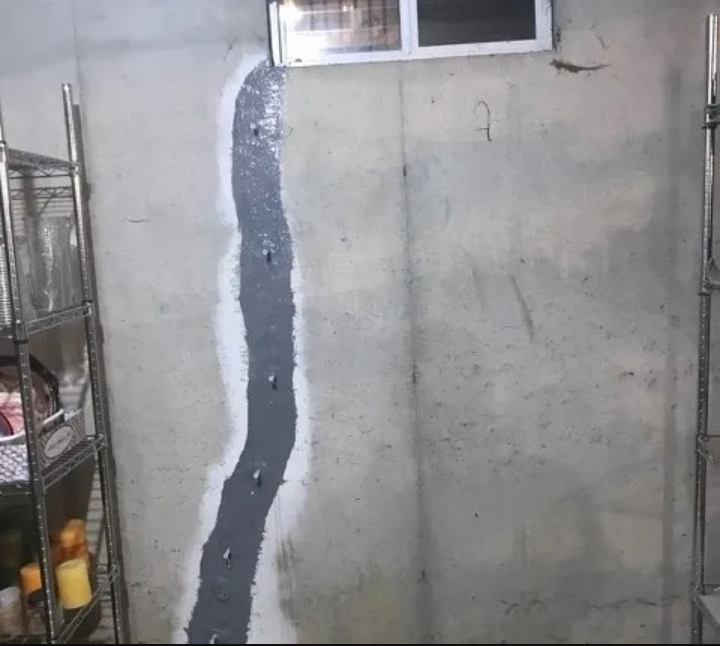
The Importance of Acting Quickly
When it comes to foundation cracks, procrastination isn’t your friend. Small problems have a nasty habit of growing into big headaches, and ignoring them can push your home closer to disaster. A tiny hairline crack today might let in water during the next heavy rain; before you know it, you’re dealing with basement flooding, mold, and a steadily sinking budget.
Delaying repairs almost always costs more in the end. Initial cracks that could’ve been resolved with a quick sealant or injection might escalate into major structural damage, requiring extensive — and expensive — reinforcement. Worse yet, your property’s value can take a nosedive. Foundation problems scare buyers, and even if you’re not planning to sell, a compromised foundation can make securing loans or insurance a hassle.
And then there’s safety. Let a severe crack sit long enough, and it can lead to walls bowing or floors sagging, putting your family at real risk. Foundation issues don’t self-correct. They snowball. That’s why acting quickly when you notice a problem isn’t just smart — it’s necessary. Get ahead of it before it gets ahead of you.
Strategies to Prevent Future Foundation Issues
Preventing future foundation problems doesn’t require a degree in engineering, but it does demand a bit of diligence. Here are some straightforward strategies to protect your Weston, MA, home from recurring foundation cracks:
- Maintain Proper Drainage Around Your Home: Water pooling near your foundation is a bad omen. Make sure your gutters and downspouts are functioning properly, directing water at least 5–10 feet away from the foundation. If the grading around your home slopes inward, fix it. Poor drainage is one of the easiest ways to invite cracks into your life.
- Control Soil Moisture Levels: Soil in Weston has a habit of expanding when wet and shrinking when dry—a recipe for foundation shifts. Use soaker hoses or sprinklers during dry spells to keep moisture levels consistent. The goal? Prevent big swings in soil movement that translate into stress on your foundation.
- Repair Minor Cracks Quickly: Think of minor cracks as a gateway problem. Left unchecked, they invite water, pests, and further structural damage. Filling them promptly with high-quality sealants can keep the issue from spiraling into something more costly and complex.
- Inspect Periodically: Dedicate a Saturday each season to walk the perimeter of your home and poke your head into the basement. Spotting new cracks early gives you a head start on repairs. It’s time well spent—far easier than tackling a major crisis down the road.
Foundations aren’t flashy, but they’re the literal backbone of your home. A little proactive care can save you a lot of time, headache, and cash in the long haul.
DIY vs. Professional Crack Repairs
Here’s the truth: not all foundation cracks call for an SOS to the pros. Some you can tackle on your own with a bit of elbow grease and a trip to the hardware store. But before you throw on your work gloves, know the rules of engagement. Small, hairline cracks that aren’t letting water in? Go ahead and DIY. A quality concrete patch or epoxy kit usually does the trick if applied carefully. That said, there’s a fine line between “manageable” and “mistake waiting to happen.”
When should you skip DIY and call in the cavalry? If you’re seeing horizontal cracks, anything wider than 1/8 inch, or active leaking, it’s time to lean on professional expertise. These aren’t your average wear-and-tear issues—they’re signals of potentially serious structural concerns. Professionals bring more than just the know-how; they have specialized equipment and materials designed to fix the problem at its root, not just cover it up.
Here’s the bottom line: DIY repairs may save some cash in the short term, but misjudging the severity of a crack can cost you big in the long run. When in doubt? Call a pro. Your foundation—and your peace of mind—are worth it.

Conclusion
Foundation cracks are like whispers from your home, telling you something isn’t quite right. Ignore them, and they’ll grow louder—eventually shouting in the form of costly structural damage. Repairing these cracks isn’t just about aesthetics; it’s about safeguarding your investment and, frankly, your peace of mind. Whether it’s a hairline crack or a horizontal gash hinting at serious strain, the key is acting fast and addressing the root cause.
For Weston, MA homeowners, where soil shifts and New England weather can wreak havoc, vigilance is your best defense. Know the signs. Trust the experts. And don’t wait for a small problem to snowball into a nightmare. A solid foundation means a solid home—one that stands strong for decades to come.
Reviews from Happy Customers
Our top priority is customer satisfaction, and we work closely with clients to understand their unique needs and goals.




